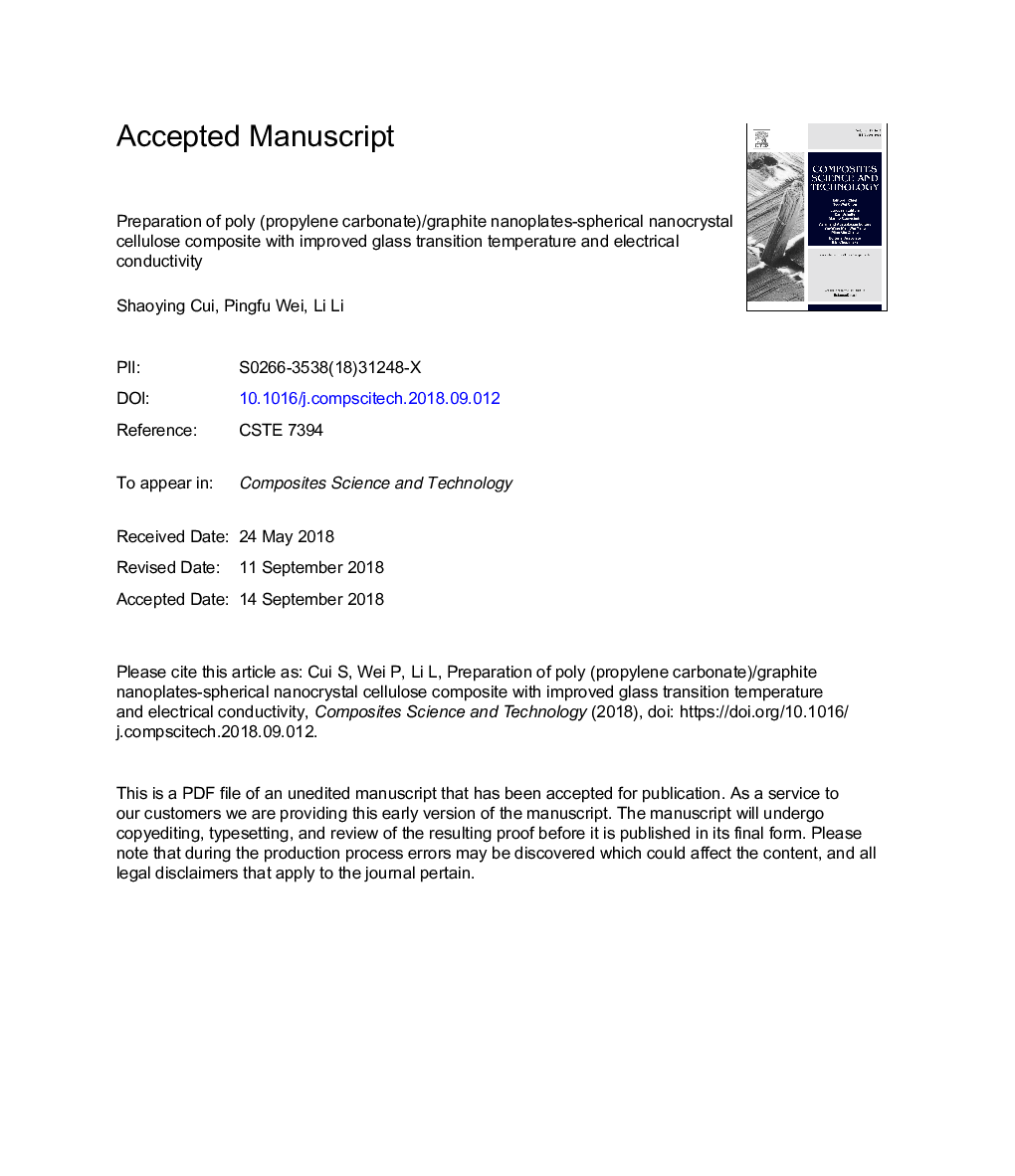| Article ID | Journal | Published Year | Pages | File Type |
|---|---|---|---|---|
| 10152771 | Composites Science and Technology | 2018 | 35 Pages |
Abstract
Poly(propylene carbonate) (PPC) is a new attractive biodegradable polymers synthesized from inexhaustible carbon dioxide and propylene epoxide, but shows low glass transition temperature (Tg) and poor mechanical properties, which greatly limits its practical applications and industrialization development. To improve Tg and the practicability of PPC, in this work, graphite nanoplates-spherical nanocrystalline cellulose (GNP-SNCC) hybrids, which were bonded by both physical and chemical forces, were prepared by ball milling from graphite and microfibrillated cellulose, and the structure formation as well as properties of PPC/GNP-SNCC composites were studied. The results showed that the improved interfacial interactions between GNP-SNCC and PPC, and the rigid two-dimensional structure of GNP-SNCC were beneficial for the constraint of PPC molecular chains, thus significantly improving Tg and the mechanical properties of PPC matrix, e.g. Tg increased from 34.0â¯Â°C of neat PPC to 51.3â¯Â°C, and the yield strength increased from 27â¯MPa to 52.8â¯MPa. Moreover, facilitated by SNCC, a conductive pathway of GNP was effectively constructed, leading to the great increase in the electrical conductivity of PPC/GNP-SNCC composite. The composite with 10â¯wt% (5.71â¯vol%) graphite showed 9 orders of magnitude higher than that of PPC/graphite composite with the same graphite content, and the percolation threshold was drastically decreased from 15 to 5â¯wt% (8.56-2.85â¯vol%).
Related Topics
Physical Sciences and Engineering
Engineering
Engineering (General)
Authors
Shaoying Cui, Pingfu Wei, Li Li,
